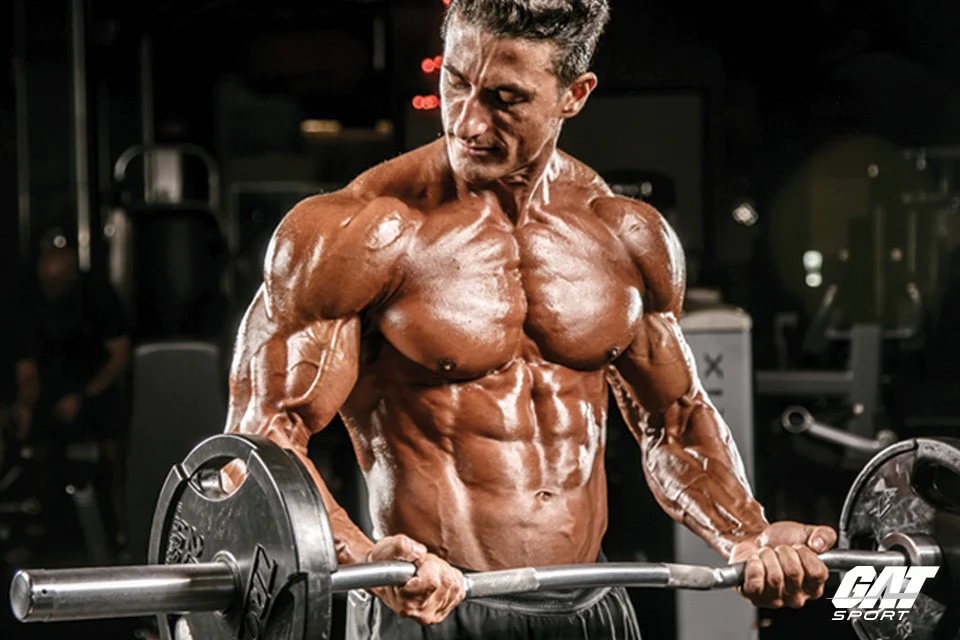How To Build Muscle (Steps and Requirements)

How To Build Muscle: The main focus while trying to improve one’s physique is frequently on increasing muscle. Adding muscle mass will improve your lean body mass, give your muscles more definition, and give your frame the proper amount of bulk and size.

It requires time, perseverance, and long-term dedication to the process in order to build muscle. While gaining significant amounts of muscle may seem difficult, the majority of people can build significant amounts of muscle with the right workout regimens and diet. Enough Info
Your confidence can increase by gaining muscle, but it requires time and dedication. Fortunately, if you put in the effort and persevere, you will see results. Regular exercise and eating a balanced diet are essential for muscular growth. Using the same routines, you can gain muscles whether exercising at home or in a gym.
This page explains how to work out, what to eat, and recovery techniques, as well as everything else you need to know about gaining muscle. How to Look like A Model
The fundamentals of gaining muscle
Skeletal muscles are made up of parallel cylindrical fibers that contract in order to generate force. Any external movement made by a person is made possible by this muscle contraction. The amino acids, which are the building blocks of proteins, in your muscles are constantly being renewed and recycled by your body.
You will lose muscle mass if you consume less protein than you expend. There is no discernible change in muscle size if net protein synthesis is balanced. Last but not least, if your body stores more protein than it expels, your muscles will expand. Increasing the rate of protein deposition while reducing the rate of protein breakdown is the secret to gaining muscle mass.
Resistance training’s main objective is muscular hypertrophy, the process of gaining more muscle mass. The production of hormones like growth hormone and testosterone, as well as the availability of amino acids and other nutrients, all play a role in the process of growing muscle. Resistance exercise and consuming enough protein and other nutrients are your main tools for accelerating your body’s rate of protein synthesis, which is essential for the growth of new muscle tissue. How To Stop Bleeding(steps and Requirements)
The right amount of resistance training triggers your body’s hormonal reaction to growing muscle, but to ensure that the process leads to muscle gains as opposed to muscle losses, there must be enough protein and calories available.
How quickly can you bulk up?
In comparison to many other life goals, building muscle is shockingly straightforward, but that doesn’t mean it’s simple or quick.
It takes many months or even years of weight training and healthy food to build significant muscle. Even while using the same regimen, individual muscle-building rates differ. Overall, research has shown that 0.5-2 pounds (0.25-0.9 kg) of muscle growth each month is a solid benchmark for maximum potential muscle growth when combined with proper nutrition and consistent exercise.
Even if at first glance this may seem like a tiny sum, the effects can add up over time. For almost anyone starting a resistance training program, gaining 20-40 pounds (9-18 kg) of muscle in just a few years of diligent training would result in a significant change in physique.

Read Also: How to Get Rid of Yellow Teeth (10 Best Methods)
Tips on how to build muscle
While many forms of exercise have positive health effects, only working your muscles against moderate to high resistance can consistently promote muscular growth. Additionally, muscle growth is particular to the muscles that are in use. How to Stay Fit at Home
Working your muscles
Choose the desired number of repeats
Pull-ups are a good exercise for your back
Grab a bar that is comfortably taller than you and hold it horizontally. Your hands should be shoulder-width apart. Once you are hanging from the bar, raise your legs back. Using only your arms, pull yourself up until your chin is level with the bar. Then, return to your starting position by lowering yourself.
- Both an overhanded and an underhanded grip are acceptable.
Perform three sets of 10 pull-ups. - You’ll tone your lats, traps, and rhomboids with this exercise.
To build your back, do bent-over rows.
Stand about 6 to 10 inches (15-25 cm) behind a barbell or two dumbbells with your feet shoulder-width apart. Keep your shins upright while bending your knees slightly. Your spine and head should be straight as you lean forward at the waist. With an overhand hold, raise the weight to your upper or lower chest. Slowly descend until your arms are almost fully stretched but not reaching the floor.
- Perform three 10-rep sets.
Bench press to develop your pecs and chest.
Start off with a weight you can lift easily. If you’re just starting out, hoist the bar while adding 5 to 10 pounds (2.3 to 4.5 kg) on each side. Grab the bar while holding your arms shoulder-width apart in this position. Push up until your arms are completely extended, then slowly lower the bar down to nipple level.
- Complete three sets of 8–10 repetitions. Add more weight to each set if you can.
- After a few months of training, gradually raise the weight and reduce the number of reps each session to 6–8. Aim to exhaust your muscles by the third set.] How To Know If You’re Depressed :
Push-ups are a good upper-body exercise
Position your arms shoulder-width apart in a plank position. After then, steadily lower yourself until your chin touches the ground. Push yourself up to the starting position gradually.
- Perform three sets of 10 pushups.
- Your triceps will be worked more intensely the closer your hands are together.
- A workout you can perform anywhere is push-ups.
Work your thighs, glutes, and calves by performing deadlifts.
Put two dumbbells or a large barbell on the ground in front of you. Slowly bending at the knees while maintaining a straight spine and a strong core. Take hold of the weight, then stand up while keeping it close to your body. After then, gradually drop the weight to the ground.
- Perform three 10-rep sets.
- Pick a weight that is exceptionally hefty for you.
- When performing deadlifts, keep every muscle in your body active. Your lower body can assist you in lifting weights. How to Stay Fit at Home
Do squats with a weighted bar
Add weights to a barbell, then put it on a rack so that it’s a little lower than shoulder height. Duck under the bar and stand up so that the bar rests comfortably just below your neck. Keep your knees slightly bent and your legs slightly wider than shoulder width. Lift the bar up off the rack and move backward 1 step so that the weight rests on your back. Then, slowly lower yourself down into a squat. Exhale deeply and use your legs and hips to lift out of the squat.
- Execute 3 sets of 8 squats.
- The weight should be heavy enough to make squatting challenging yet manageable. This can include beginning with a bar without any weight if you’re a newbie.
- Keep your hips back and your chest, knees, and feet vertical while you perform squats.
- The safest position for your knees is a 90-degree bend; also, be sure your knee doesn’t extend past your toes.
Work your legs by performing Bulgarian squats with a dumbbell
Use both hands to hold a dumbbell in front of your chest. Lift your right leg back while facing a bench such that it is parallel to the ground and is in a comfortable resting position. Using your left leg, squat down until your right knee nearly touches the floor. Return to your starting position by rising gradually. On the opposite side, repeat.
- Perform three 8-rep sets.
- Single-leg squats are another name for the Bulgarian squat.
For stronger shoulders, perform an overhead press
With your palms facing forward, hold a barbell or two dumbbells at chest- or shoulder height. Lift the object until your arms are fully extended above your head. To avoid hyperextension, keep your elbow slightly bent. After that, gradually return the weights to their initial position.
- Perform three 8-rep sets.
To strengthen your abs and core, perform crunches
Place your hands loosely behind your head with both arms in that position while you lie down on a mat. Your knees should be bent, and your feet should be flat on the ground. Your shoulders should gently lift off the ground while you press the small of your back into the ground. Return to the ground carefully after that.
- 3 sets of 20 reps should be repeated.
- Maintain slow, steady motion.
Work your core and abs by doing planks. Lay down on the ground face-down. your shoulders with your hands there. After that, raise yourself so that your body remains perpendicular to the ground. Hold your stance for as long as you can while keeping your body straight.
Hold the plank position for two minutes. If you can’t, try a plank again after a little period of relaxation. Perform as many planks as necessary to finish the 2 minutes.
You can adjust this workout by resting on your forearms if you are unable to hold yourself on your arms.
Eating a healthy diet
10% more calories should be consumed
To determine your daily caloric requirements, keep a log of your calorie intake and take the average. Then, add 1.1 to that figure. To give the best nutrients for muscle growth, make sure your calories are coming from a range of healthful, minimally processed foods.
Consume sufficient protein to promote muscular growth
Per pound of body weight, aim for 0.8 to 1 gram of protein (1.6g to 2g per kg). If you weigh 180 lb, for instance, you should consume 144–180 g of protein each day. Use your lean body mass rather than your present weight when determining your body weight if you are overweight.
- The amount of protein in one ounce (28 grams) of cooked meat is about 7 grams. With no other protein sources, three 6-oz. steaks would be sufficient to reach your daily protein goal of 120 grams.
- Use protein shakes to make up the gap if you’re having trouble consuming these protein requirements.
Every day, consume at least 8 cups (1.9 L) of water
Water is very essential.
For a muscle to grow at the best rate, the body requires enough water. To create healthy muscle, you should aim to consume at least 8 cups (1.9 L), though you probably need more. Here’s a handy calculation to ensure you’re getting enough:
- Body weight in pounds times, 0.6 equals water intake in ounces in imperial measurements.
Similar calculations in metric units: Water consumption is calculated as body weight in kg multiplied by 40. - This covers all the water in meals and beverages, not simply the water in glasses.
- If you are over 30, you can change these numbers to kg x 30 to 35 or pounds x 0.46 to 0.54 instead.
Every day, have a normal meal at the same time.
Change your eating patterns such that you are eating 5-7 smaller meals throughout the day rather than 2-3 larger ones.
- Make one of your meals a protein smoothie to help maintain a high protein consumption. Blend 8 ounces (230 g) of skim milk, 1 banana, 1 tablespoon (15 ml) of peanut butter, and 2 scoops of protein powder to create a basic shake.
Consume good fats
In addition to improving the flavor of food, fat has health benefits as long as it is consumed in moderation. A stick of butter, a bag of chips, or some bacon are examples of foods that are high in saturated fat; this amount should be kept to 20g or less. However, raise your consumption of monounsaturated and polyunsaturated fats, which are beneficial fats.
- Multiplying your calorie intake by 0.008 for the maximum amount of saturated fats and by 0.03 for the “good fats” can help you figure out how much fat in grams you should be consuming. For instance, you would limit saturated fats to 20g or fewer for a 2,500-calorie diet and allow up to 75g of mono- and polyunsaturated fats.
- Fat helps to produce better eyesight, healthy skin, and the right distribution of the vitamins A, D, E, and K. Maintaining a sufficient intake of fats will hasten muscle growth and recovery because they are necessary for the synthesis of hormones as well.
- Avocado, almond, cashew, peanut, and pistachio nuts are sources of monounsaturated fats, as are olive, canola, and sesame oils.
- Omega-3 fats are the clear victor when it comes to fats that are good for the heart, blood, eyesight, and, in youngsters, the development of the brain. Many foods high in omega-3s include this fat. Fatty cold-water fish including salmon, tuna, trout, and sardines are an additional excellent source.
- Sunflower seeds and oils, flaxseed and flaxseed oil, corn, cottonseed, and safflower oils, as well as soybeans and soybean oil, all include polyunsaturated fats.

Read Also: How to Make a Nose Piercing Heal (Step-by-step )
Conclusion
Resistance exercise and eating the right foods are commitments that are necessary for building muscle.
Compound and isolated movements with weights should make up the majority of a muscle-building workout plan; however, the exercises, sets, and repetitions should be changed to promote steady, long-term improvements in both muscle size and strength. In order to build muscle, you need to consume enough protein, fat, and calories to exceed your daily energy expenditure—but not by a significant amount that you wind up gaining too much weight.
Even the majority of people can achieve significant improvements in muscle mass with months to years of diligent exercise. In order to achieve your muscle-building objectives, you must lift heavy, eat healthily, and practice consistency.
FAQs & Answers
Is it possible for a skinny guy to gain muscle?
The ability to gain muscle exists in skinny guys. You have the added benefit of having low body fat levels naturally, which will help you achieve a ripped appearance when you do add muscle.
Which food makes a backbone strong?
Spinach, broccoli, and kale are all effective anti-inflammatory foods. Additionally, each of these veggies has nutrients that will support the health of your spine. Your spine, which serves as the skeletal system of your body’s backbone, could use all the nutritional support it can receive.
Will I lose a lot of muscle if I take a week off from training?
Your muscle strength won’t suffer significantly if you skip a few weeks of doing out. We are aware that after a month of inactivity, skeletal muscle strength essentially stays the same. However, as previously noted, after three weeks of idleness, athletes can begin to lose muscle.




